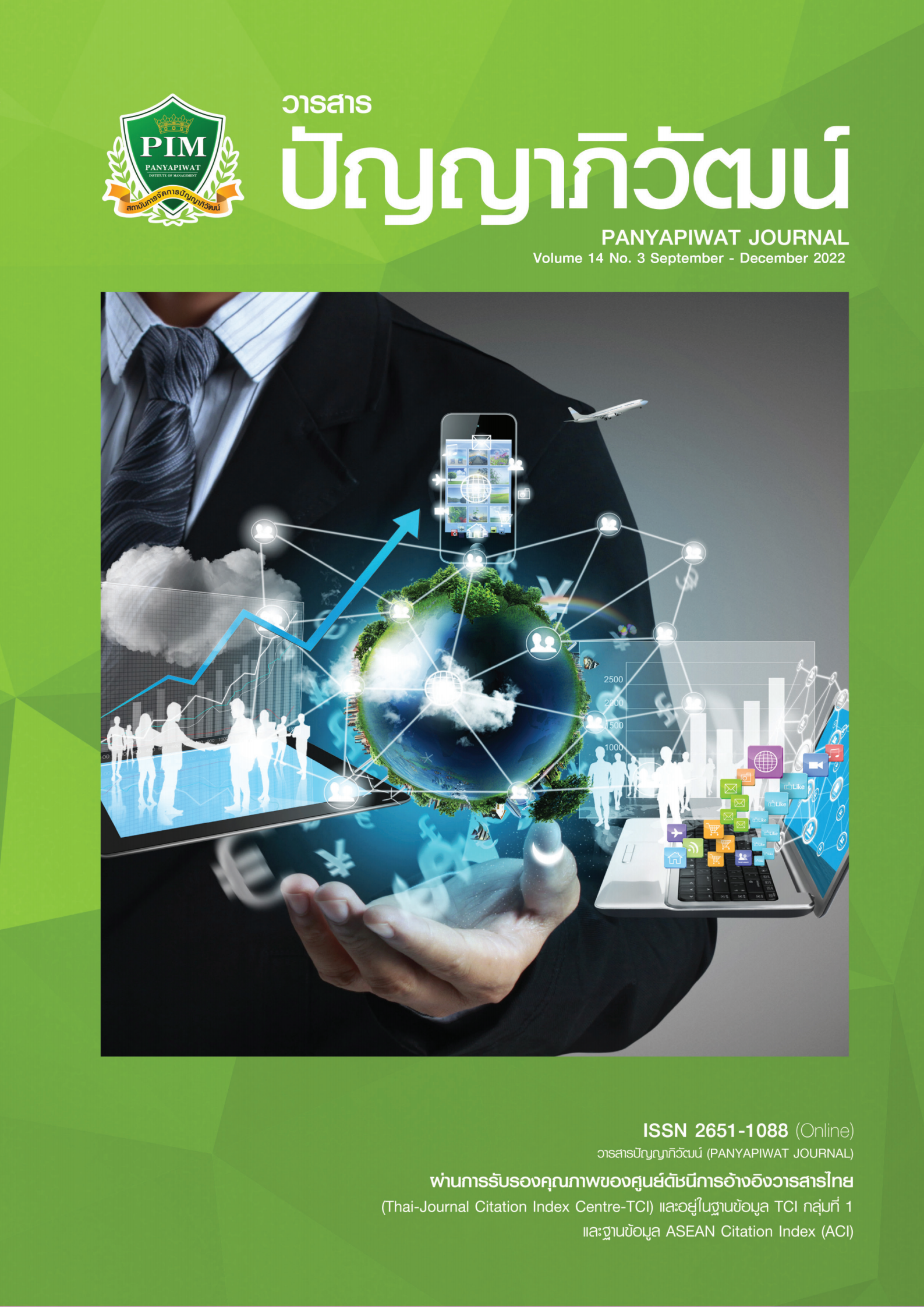CAUSAL FACTORS OF DESTINATION TOURISM MANAGEMENT AFFECTING BUSINESS RESULTS
Main Article Content
Abstract
Thailand is considered to have many famous tourist destinations. But it now is facing more intense competition when many countries have begun to change their policies by turning to focus on generating income from tourism businesses. Based on such a problem, this research study has the following objectives: (1) to study the causal factors of destination tourism management affecting business results; (2) to study the influences of the causal factors of destination tourism management affecting business results; and (3) to develop a model of the causal factors of destination tourism affecting business results.
This study is a mixed-method involving the quantitative and qualitative research methodologies. In the quantitative study, an online questionnaire was employed to collect data from the research sample consisting of 400 tourist operators and tourist guides in Thailand. In the qualitative study, the researcher conducted in-depth interviews of 6 tourism entrepreneurs and tourist guides classified by types of tourism business. The analysis results can be concluded that tourism image affects destination tourism management; tourism innovation affects destination tourism management; service quality management affects destination tourism management; tourism image affects business results; tourism innovation affects business results; service quality management affects business results; and destination tourism management affects business results. Therefore, tourism operators in Thailand can use the results of this research study for development of tourism strategies, promotion of tourism image, promotion of culture, and management of service quality in order to create competitive advantage for the tourism business.
Article Details

This work is licensed under a Creative Commons Attribution-NonCommercial-NoDerivatives 4.0 International License.
I and co-author(s) certify that articles of this proposal had not yet been published and is not in the process of publication in journals or other published sources. I and co-author accept the rules of the manuscript consideration. Both agree that the editors have the right to consider and make recommendations to the appropriate source. With this rights offering articles that have been published to Panyapiwat Institute of Management. If there is a claim of copyright infringement on the part of the text or graphics that appear in the article. I and co-author(s) agree on sole responsibility.
References
Altinbasak, I., & Yalçin, E. (2010). City image and museums: The case of Istanbul. Tourism and Hospitality Research, 4(3), 241-251.
Baloglu, S. (2001). Image variations of Turkey by familiarity image index: Informational and experiential dimensions. Tourism Management, 2, 127-133.
Baloglu, S., & McCleary, K. W. (1999). A model of destination image formation. Annals of Tourism Research, 26, 868-897.
Beerli, A., & Martin, J. D. (2004). Factors influencing destination image. Annals of Tourism Research, 31, 657-681.
Chen, F. C., & Tsai, C. D. (2007). How destination image and evaluative factors affect behavioral intentions? Tourism Management, 28(1), 115-122.
Chi, C. G. Q., & Qu, H. (2008). Examining the structural relationships of destination image, tourist satisfaction and destination loyalty: An integrated approach. Tourism Management, 29(4), 624-636.
Hair J. F., Black, W. C., Babin, B. J., Anderson, R. E., & Tatham, R. L. (2006). Multivariate data analysis (6th ed.). Pearson Prentice Hall.
Inklam, R. (2014). Quality of service of tourism information service center. Tourism authority of Thailand at Suvarnabhumi airport. International Thai Tourism Academic Journal, 10(1), 59-71. [in Thai]
Jalilvand, M. R., Samiei, N., Dini, B., & Manzari, P. Y. (2012). Examining the structural relationships of electronic word of mouth, destination image, tourist attitude toward destination and travel intention: An integrated approach. Journal of Destination Marketing and Management, 1(1-2), 134-143.
Julakarn, P. (2013). Knowledge management and customer knowledge management in the tourism industry [Master’s thesis]. Thammasat University. [in Thai]
Kanchanalai, K. (2018). Guidelines for the development of Phuket Province as a city of tourism innovation. http://www.dsdw2016.dsdw.go.th [in Thai]
Leisen, B. (2001). Image segmentation: The case of tourism destination. Journal of Service Marketing, 5(4), 49-66.
Li, C. J., & Bunyam, T. (2015). Service quality of Chinese travel agents affecting trust in tour operators and intention of repeat service of Thai tourists. Journal of Applied Arts, 8(1), 54-61. [in Thai]
Limpairote, R. (2015). The influence of cultural tourism image and tourist satisfaction towards the intention of returning to visit Phra Nakhon Si Ayutthaya Province. In The 7th Academic Meeting National and International Academic Conferences 2015 (pp. 448-460). Suan Sunandha Rajabhat University. [in Thai]
Mariutti, F. G., Giraldi, J. E., Moura, D., & Crescitelli, E. (2013). The image of Brazil as a tourism destination: An exploratory study of the American market. International Journal of Business Administration, 4(1), 13-26.
Praphasawat, S. (2011). Tourist attitudes and satisfaction towards day tourism. The only one at Bang Saen Beach, Chonburi Province [Independent study]. Bangkok University. [in Thai]
Prayag, G., & Ryan, C. (2012). Antecedents of tourists’ loyalty to Mauritius: The role and influence of destination image, place attachment, personal involvement, and satisfaction. Journal of Travel Research, 51(3), 342-356.
Romana, K. V. (2013). Enforcing sustainability principles in tourism via creative development. Journal of Tourism Challenges and Trends, 6(1), 35-58.
Soonthornwiboon, P. (2018). Communication innovations with the tourism industry in Thailand 4.0 era. Journal of Social Communication Innovation, 6(2), 200-210. [in Thai]
Suriya, S. (2013). Guidelines for improving the service quality of hotel front desks for ASEAN tourists-Case study: Boutique Hotel, Bangkok [Master’s thesis]. National Institute of Development Administration. [in Thai]
Teran, A., Ana, L., & Uscanga-Medina, S. (2011). Impact of services quality on customer satisfaction and repeat purchase attribute in hospitality industry. International Journal of Leisure and Tourism Marketing, 2(3), 258-269.
Tosun, C., Pinar, T. S., Timothy, D. J., & Fyal, A. (2007). Tourist shopping experiences and satisfaction. International Journal of Tourism Research, 9(2), 87-102.
Yamane, T. (1967). Statistics: An introductory analysis (2nd ed.). Harper and Row.


